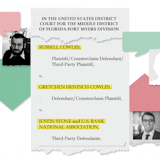Sarah Beth Ryther would love to have a car, her own apartment and eventually a child. But she thinks that seems unreachable as, like most of her co-workers at Trader Joe’s in Minneapolis, she earns $16 to $20 an hour.
A family “is something I definitely can’t afford. I don’t make enough to pay for health care,” she said, let alone a better apartment — at her present home, ice sheets form in the bath tub because of heating problems.
Ryther is one of many Americans on the flip side of the Federal Reserve’s siege against inflation.
The central bank is watching to confirm their series of interest rate hikes — 11 since March 2022 — are working to rein in the U.S. economy and drop the inflation rate to 2% from 3.4%. The Fed, ahead of its next inflation update Feb. 13, is celebrating signs that wage growth, which reached its highest levels in decades in 2022, is now slowing. And that’s good news for the Fed that inflation might be under control.
But for workers like Ryther, who are still struggling to afford the basics, there’s anxiety that recent wage gains — which came after decades of stagnant wage growth — could vanish as quickly as they appeared.
Adjusted for inflation, weekly wages for the median worker grew 1.7% between 2019 and 2023, according to the U.S. Treasury Department. Though earnings have outpaced price increases compared to 2019, it hasn’t been enough to give most people a “bread and roses” lifestyle, Ryther said.
“Wage growth remains high but has been gradually moving toward levels that would be more consistent with 2% price inflation over time,” Fed Chair Jerome Powell said in a Dec. 1 speech in Atlanta.
The idea is the cost of wages gets passed on to consumers through higher prices, which then reduce buying power. And while that makes sense in theory, it’s a little harder to swallow for those trying to make a living off a rate close to minimum wage.



